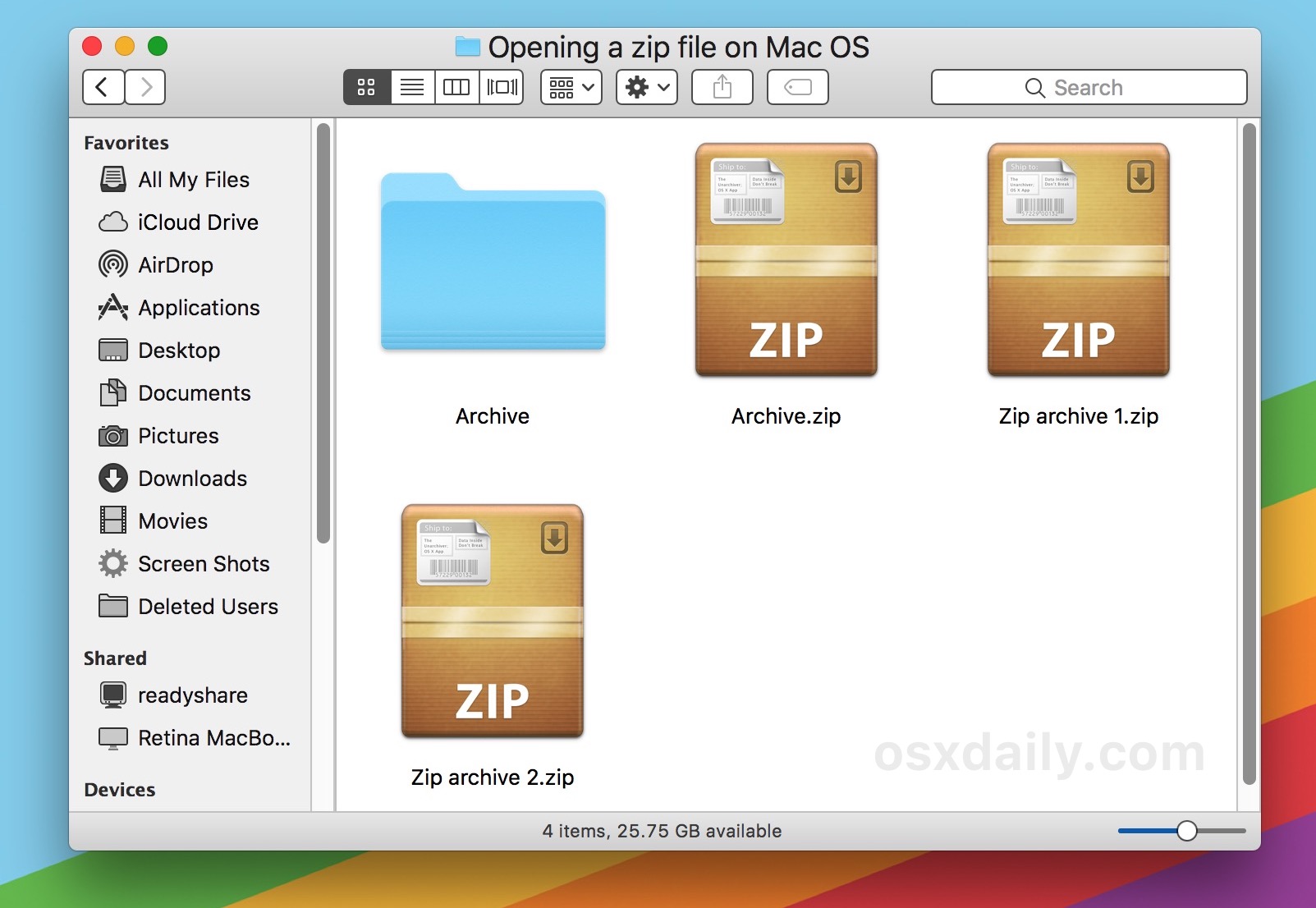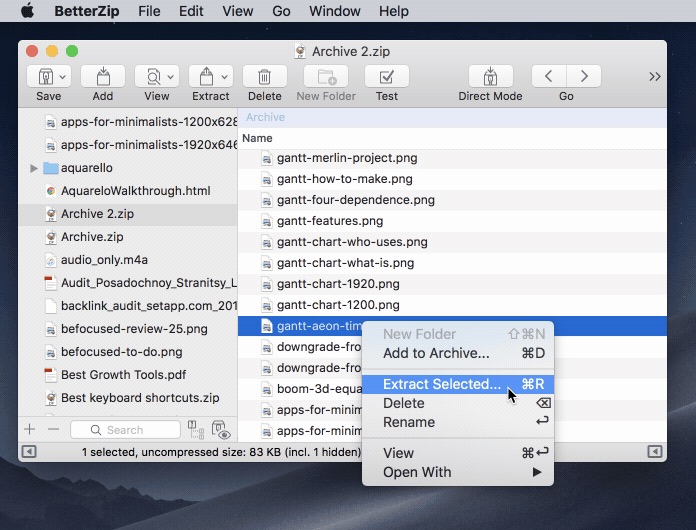

* If the zip archive is password protected, the proper password must be entered before the zip file will be extracted. The Mac also includes an ultra simple ability to make a zip file or even to make a password protected zip file. zip archive and choosing to “Open”, or if you have third party unzip utilities installed (more on that in a moment), you can choose “Open With” and select another archive tool. You can also extract zip files by right-clicking (or Control+clicking) on a. The built in Archive Utility tool in Mac OS will open the zip archive and extract the file(s), typically they are placed within a folder of the same name of the zip archive, minus the. In the example above, a zip file named ‘Archive.zip’ was extracted to create a folder called ‘Archive’ which contains the contents of the origin zip file.

When finished, the unzipped contents will appear in the same folder as the original.zip archive file to begin extracting the zip archive * Locate the Zip archive file in the Finder of the Mac.How to Open Zip Files on a MacĮxtracting a zip file on a Mac is super easy: The zip file is simply the compressed data presented as a single archive. For example, a single zip file may contain a handful of documents of various file types, or an entire folder of JPG files, or an application, or any such similar data. You don’t so much open it as you extract it to reveal the contents of the zip archive. zip extension) is simply a container holding another file or files. Wonder no more, it turns out that opening and unzipping files on a Mac is very easy thanks to the built-in Archive Utility tool. If you get a zip file you may be wondering how you can open the archive to view what it is and extract the internal components of the zip archive.


 0 kommentar(er)
0 kommentar(er)
